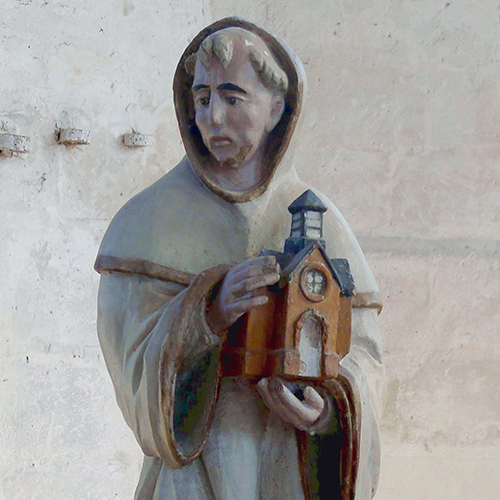
Feast day: August 20
Saint Bernard of Clairvaux was called at the age of 20 to leave his family and join the Monastery of Citeaux. The monks there were called Cistercians, and, in reaction to what they saw as abuses of the Rule of Saint Benedict by Benedictine monasteries, felt called to follow the Rule more strictly. (In contrast to the black habits of the Benedictines, the Cistercians chose to wear white.)
Bernard was soon joined in his new monastic lifestyle by thirty family members and friends! Three years later, Bernard was sent to found a new abbey, the Abbey of Clairvaux, and to become its abbot. Bernard was fervent and demanding, though he tended to be more demanding of himself than of others. After an ailment, Bernard became more patient and understanding.
Saint Bernard often left the monastery to be a mediator for longstanding arguments. Because of his gift of expressive and persuasive speech, he traveled through Europe, gaining support for the Second Crusade. However, when the Second Crusade ended in bloodshed and disaster, Bernard personally shouldered much of the responsibility, which may have been one of the reasons for his death. His writings on Scripture and prayer have endured through the centuries and are still studied today. Saint Bernard was canonized in 1174. He was named a Doctor of the Church in 1830.
The Cistercian Order still exists today in two forms. The Order of Cistercians, called the "Common Observance," follows the Rule of Saint Benedict but, for the men, includes the ministry of teaching. (The nuns of the Common Observance are strictly contemplative, that is, they live a common life within the monastery.) The Order of Cistercians of the Strict Observance, sometimes called Trappists, follow a strictly contemplative lifestyle. There are several monasteries of monks in the United States, and four monasteries of nuns.
:(ImagePierre Poschadel, CC BY-SA 4.0, via Wikimedia Commons)